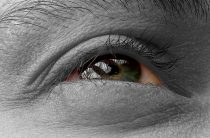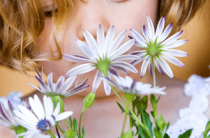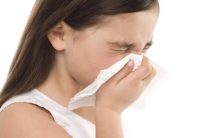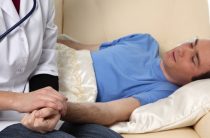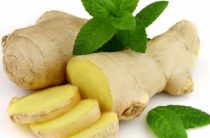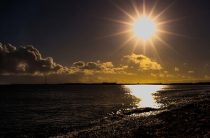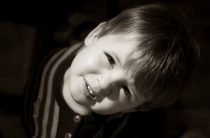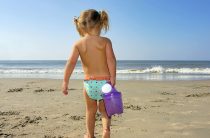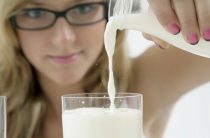An allergic reaction is similar to a kind of protective mechanism, only as a harmful or alien human body begins to perceive some factor that is quite natural for the majority. The most common variety is an allergy to flowering, the symptoms of which we will discuss in our article.
So, this type of allergy in medicine is called hay fever, and is a seasonal disease, attacking patients from spring to autumn. Basically, plant pollen accumulates in the air when it is dry and hot outside, but after rain, the manifestations of such a reaction recede somewhat.
How can pollen enter the body?
The pollen of trees and various herbs is very easily carried along with the wind through the air, and together with inhalation enters the human body through its respiratory system. It settles on the mucous membranes of the human nasal passages.
The immune system of an allergic person “recognizes” pollen as an allergen harmful to the body and tries its best to eliminate its effect. It thus helps to activate the protective functions that make themselves felt as an allergic reaction.
Dangerous periods
There are various periods in which the risk of pollen allergy increases. They are distinguished based on the periods of flowering of certain plants:
- April-May: Trees bloom (hazel, alder, birch, oak, willow, maple, poplar, ash, pine, elm and aspen)
- June - July: the flowering time of most meadow grasses (fescue, foxtail, timothy grass, corn, hedgehog, sowing rye)
- July - August (quinoa, coltsfoot, dandelion, ambrosia, wormwood, sunflower).
What else influences?
Allergy to flowering is a very common ailment. Judge for yourself: according to the statistics of allergy sufferers on the planet - 30% in general, and those who have symptoms of an allergy to flowering - 10%!
Pollinosis most often affects women. By the way, those who live in rural areas are much less at risk than residents of megacities. Also, many other factors (environmental, geographical and climatic) can influence the occurrence, development and course of the disease.
Flower allergy symptoms
Allergy to flowering has the following symptoms:
- Itchy nose
- Runny nose (also called rhinorrhea)
- sneezing
- Nasal congestion
- Decreased sense of smell
- Swelling of the nasopharynx
- Itching in the eyes
- Eye redness
- lacrimation
- Dyspnea
- Dry cough
- Labored breathing
- Attacks of suffocation in the form of pollen bronchial asthma
- Skin manifestations less common than with other allergic reactions: dermatitis (accompanied by severe itching, body rash or hives)
- General deterioration
- Irritability
- fatigue.
Often, an allergy to flowering and its symptoms are confused with SARS. Indeed, many of the symptoms are similar. But with viral infections, a high temperature rises, and during a pollen allergy, it remains normal.
Forms of allergy to flowering: what are they?
Depending on the severity of the course of an allergic reaction, three forms of the disease are distinguished:
- Light
- Medium
- And heavy.
The diagnosis of an allergy to flowering is made by an allergist, he also determines the severity with which the disease proceeds, establishing its form.
weather dependency
Seasonal allergies often depend on weather conditions. When there is no precipitation for a long time, the concentration of pollen in the air increases significantly, so the symptoms of pollen allergy become more pronounced. But in rainy and humid weather, everything changes: there is less pollen in the air, and the symptoms weaken.
Why does allergy come: about the causes of hay fever
It is not known why this or that organism begins to perceive the allergen so hostile, but the following reasons are distinguished:
- Heredity
Hereditary predisposition, perhaps, has a major role in the development of allergies. If a child has both parents who are allergic, then the probability of developing an illness in a crumb reaches 80%. By the way, this disease is transmitted more actively through the female line. Mothers pass it on to their children in 70%, and fathers in only 30%.
- Malnutrition and sickness from an early age
Weakened immunity, one way or another, affects the occurrence of allergic reactions.
- Ecology
Bad ecology significantly reduces the body's resistance. Already with the first breath, children receive a whole mass of toxins, dust, and other harmful substances. Later, food products that contain hormones, modifiers, and additives are added to the air.
- Sterile environment
If a person has been in too sterile conditions since childhood, then, no matter how paradoxically it may be perceived, the risk of developing allergic reactions in him increases significantly. In developed cities and countries where powerful hygiene products are actively used, the rate of allergic cases is higher than where a person naturally learns from birth probable allergens in quantities that are safe for the body.
An allergy to flowering in most cases does not take long, manifesting itself from childhood or at a young age. It has a cyclical course, aggravating in a certain period (from spring to autumn), and turning into a remission stage in the rest of the year (when all symptoms disappear).
How to treat - we fight allergies together
If the allergy is not treated, then it will progress. Its course can be complicated, so you should consult an allergist. In large cities, as a rule, there are allergy centers. If it is not available in your locality, then start by going to the clinic. The allergist will determine exactly what therapy is needed, what complex of treatment will help the patient.
Flower allergy is treated in the same way as other types of allergies. Today, in most cases, antihistamines are prescribed. They are convenient to take (mostly once a day is enough), and the course of treatment is limited to one week.
To alleviate the manifestations, in combination with antihistamine dosage forms, non-hormonal therapy for topical use (sprays, and for rashes - ointments or creams) is prescribed.
When the allergy is very severe and does not respond to the main therapy, the patient is prescribed corticosteroids. These drugs should not be used without medical advice. They are very strong action, the course of treatment is limited to five days.
In the period of exacerbation, immunotherapy is good in order to increase the defenses of the sick organism (for this purpose, they usually resort to the appointment of herbal remedies).
Recommendations: what to do in life for allergy sufferers?
Of course, it is now impossible to completely cure allergies, but every allergic person, including patients with an allergy to flowering, can make their life much easier if they follow simple tips:
- You can and even need to keep flowering calendars. Thanks to them, you can know where, at what time, in what places the patient has an allergy.
- It is best to avoid all contact with allergens as much as possible.
- During flowering periods of allergenic plants, you do not need to go outside before noon (especially early morning is dangerous).
- You need to insert nets into the windows (preferably mosquito nets), wiping them regularly.
- All sorts of outings into nature or suburban areas should be avoided whenever possible.
- After coming home from the street, the nose and eyes should be washed with cold water, hands and face should be washed thoroughly.
- During treatment, you should not use cosmetics (such products can aggravate the course of the disease).
- Resolutely refrain from smoking and drinking alcohol.
- Do not decorate your house with dried flowers.
- You may have to limit yourself a little in terms of food (is it worth doing and what should be the restrictions, the doctor will say).
- Patients with pollinosis are prescribed mandatory preventive courses, which are usually carried out twice a year (in early spring and autumn).
- Do not forget about preventive vaccinations.
- When traveling, you need to take an allergy passport with you. It can come in handy during the next attack and even save your life. Allergy is a very unpredictable disease, so no one knows where and when a serious attack or even Quincke's edema or anaphylactic shock can occur.
Allergy to indoor plants: does it happen?
It happens that the manifestations of an allergy to flowering and its symptoms haunt the patient literally all year round. Then the point is not seasonal flowering, but, most likely, intolerance to indoor plant pollen.
Most often, allergic reactions come into the human body due to contact with such plants:
- Geranium
- ficus
- Azalea
- Hydrangea
- Kalanchoe
- Oleander
- Cyclamen
- Monstera
- fern crops.
There are cases when it is not the plant itself that is to blame for the development of an allergic disease, but completely different factors:
- Mold in a pot
- Accumulation of dust on leaves
- A fertilizer that is applied to the soil.
In order to know the exact cause of the allergy, you need to pass special tests.
And if it is children's hay fever?
When a baby develops an allergy, you need to go to the doctor. Also a cause for concern may be a frequent runny nose for no reason, when the usual treatment of this symptom does not help. The doctor usually prescribes complex therapy, which allows not only to treat an allergic disease, but also to alleviate general well-being.
When flowering begins, it is better to take the baby away from allergens.
If this is not possible, then on the hottest and windiest days it is better not to leave the house at all. It is good if the baby has a hypoallergenic diet during this period. Taking any drugs (including herbal medicine) without a doctor is prohibited! As a preventive measure and to reduce the manifestations of the disease during an exacerbation, it is advisable for a baby to drink a course of immunomodulators, combining with enterosorbents for dysbacteriosis.
Finally: some useful little things
If you have a period of exacerbation of an allergic disease, there are little things that can somewhat alleviate the symptoms. Follow these simple rules:
- Open windows less often when allergenic plants are blooming
- After returning from a walk, it is better to take a shower immediately.
- Do not wear at home the clothes you wear outside
- Street clothes should not hang in the sick room
- Do not keep fresh flowers at home (especially bouquets of dried flowers)
- Give up strawberries, ice cream, pineapples, kiwis, carrots, milk, nuts and seeds, juices and bright spices and other possible food allergens for a while.
So that allergies do not give you trouble, do not delay your visit to the allergist. Our specialist will help you not to aggravate the problem: you can already talk to him about allergies without leaving this site! Believe me, allergies can be absolutely no trouble if you know how to live with it!
